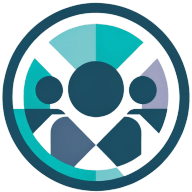8 Methods for Gathering and Implementing Client Feedback
Navigating the landscape of client feedback can transform a business's approach to growth and innovation. This article distills valuable strategies from seasoned industry experts to effectively gather and utilize client feedback. By integrating these expert-backed methods, organizations can forge stronger relationships and drive impactful change.
- Create Open Communication Channels
- Conduct Follow-Up Calls
- Use Regular Check-Ins
- Focus on Revenue-First Conversations
- Start with Clear Communication
- Act on Feedback Promptly
- Make Feedback Effortless and Impactful
- Combine Formal and Informal Feedback Methods
Create Open Communication Channels
My process for gathering and implementing client feedback is rooted in creating open, ongoing communication and actively demonstrating that their input leads to meaningful action. It starts with setting the expectation early on that feedback is not only welcome but essential to the process. I use structured methods such as monthly check-ins and tailored surveys to give clients a consistent opportunity to share their thoughts. However, I always complement these tools with direct, face-to-face conversations. These conversations allow me to pick up on nuances like tone and body language that surveys or forms might miss. Once feedback is collected, I ensure it's reviewed and acted upon promptly. I prioritize transparency by communicating back to the client exactly how their feedback is being implemented, so they feel directly involved in the progress.
One standout example comes from working with a UAE-based retail company struggling with employee engagement and operational inefficiencies. Early on, I established regular team feedback loops, where both leadership and employees were encouraged to share insights about challenges and potential solutions. During one session, a junior staff member suggested an innovative workflow change that leadership initially dismissed. Drawing from my years of experience in team dynamics and my MBA in finance, I backed the idea with a cost-benefit analysis and showed how it aligned with the company's broader goals. The change was implemented, and within three months, productivity increased. By fostering a culture where every voice mattered and proving their input had a tangible impact, we didn't just improve operations, we strengthened trust and morale across the organization. This example illustrates the power of valuing client feedback and taking actionable steps to show that their voice truly drives results.
Conduct Follow-Up Calls
At Ponce Tree Services, gathering and implementing client feedback is an integral part of how we continually improve and ensure customer satisfaction. We actively listen to our clients by conducting follow-up calls after every job, where we ask specific questions about their experience, what they appreciated, and if there's anything we could do better. This direct line of communication helps us address concerns immediately and reinforces to our clients that their opinions truly matter. Additionally, we encourage clients to leave reviews on our website or social media, and we regularly review this feedback as a team to identify patterns and areas for growth. Our decades of experience have taught us that listening to clients doesn't just improve service, it builds long-term relationships based on trust.
One method we're particularly proud of is implementing customized service solutions based on client preferences. For example, a few years ago, a long-time client mentioned that they appreciated our attention to detail but wanted a clearer timeline and progress updates during a large project involving tree removal and landscaping. Using my expertise as a certified arborist and my years in the field, I worked with my team to create a structured communication plan, which included daily updates and a walkthrough at the end of each phase. Not only did this ensure the project exceeded their expectations, but it also became a standard practice we now use on all larger jobs. That one piece of feedback helped us enhance transparency across the board, and the client was so impressed they referred several of their neighbors to us. For us, the key is simple: listen, adapt, and deliver.

Use Regular Check-Ins
My process for gathering and implementing client feedback starts with regular check-ins. I use surveys and one-on-one meetings to understand their needs and challenges. One method I've found effective is sending a quick post-project feedback form that asks specific, actionable questions.
To ensure clients feel heard, I always follow up on their input—whether it's addressing concerns or implementing suggestions. For example, a client once requested more detailed progress updates, so I introduced a weekly dashboard tailored to their goals. This not only resolved their concern but also strengthened our relationship. Listening and acting on feedback builds trust and loyalty.

Focus on Revenue-First Conversations
I had a client spend $100k on content with three different agencies, and despite initially pushing their search traffic to 200k/month, it all came crashing down because we weren't properly aligned on their actual business goals. That experience completely transformed how I handle client feedback.
Now, I've built my entire client process around what I call 'revenue-first conversations' - before we even talk about traffic, keywords, or content plans, we dig deep into their sales data and revenue targets. Every Monday morning, we look at their actual sales numbers together, not just vanity metrics like traffic or rankings. I create a direct feedback loop between what we're doing and what's hitting their bank account.
I also learned to ditch the traditional monthly reporting meetings where you just throw a bunch of graphs at clients. Instead, we have weekly 'money meetings' where clients can see exactly how our work translates to revenue - it's amazing how much more engaged and valued clients feel when you're speaking their language (money) rather than just SEO jargon. And here's the thing - when clients see that direct connection between our work and their revenue, they stop worrying about all the little details and trust the process more.

Start with Clear Communication
My process for gathering and implementing client feedback starts with clear communication from the very beginning of a project. I make a point to actively listen to my clients' needs and preferences during our initial consultation, asking specific questions about their vision and priorities. Throughout the project, I check in regularly to ensure everything is meeting their expectations. After completion, I follow up with each client to gather detailed feedback, whether through a casual conversation, email, or an online review system. This continuous loop of communication allows me to understand their experience and improve my services where needed.
One memorable example involved a client who wanted to transform a neglected backyard into a sustainable vegetable garden. During our follow-up conversations, they mentioned feeling overwhelmed with ongoing maintenance, even though they were thrilled with the garden's design. Drawing on my 15 years of experience and horticultural training, I created a tailored maintenance plan and scheduled monthly check-ins to guide them step by step on care routines. I also suggested incorporating low-maintenance companion plants to naturally deter pests and improve the garden's yield. The client not only felt supported but expressed gratitude for how their concerns were addressed proactively. It was a win-win and a perfect example of how listening and adapting can turn a challenge into a long-term success story.
Act on Feedback Promptly
My process for gathering and implementing client feedback starts with listening actively and regularly. We use multiple touchpoints, including surveys, one-on-one calls, and automated feedback requests after product usage, to capture a broad range of insights. But we don't just collect the data—we act on it.
One method we've found particularly effective is creating a feedback loop. For instance, after gathering feedback, we prioritize actionable items and share updates on how we're addressing them. We've built a system where clients see changes based on their input within weeks, not months. This shows them that their opinions matter and drives deeper trust.
To give you an example, a client once suggested we improve a particular feature in our platform, Testlify, to meet their needs better. Within a few weeks, we rolled out the update and followed up to ensure the change was effective. That process not only improved the feature but also strengthened our relationship with that client because they saw that their feedback had a direct impact.

Make Feedback Effortless and Impactful
Our process for gathering and implementing client feedback is built on one simple principle, make it effortless and make it count. We collect feedback at key touch points using a mix of surveys, direct conversations and real-time in person feedback tools like SurveyStance. The real magic happens when you act on it. One method we swear by is closing the feedback loop. When clients take the time to share their thoughts, we make sure they know it wasn't wasted. Whether it's a follow-up email, a direct response or a visible change based on their input, we show them their feedback truly drives real improvements. I've personally found nothing builds loyalty faster than proving you actually listen.

Combine Formal and Informal Feedback Methods
At The Alignment Studio, gathering and implementing client feedback is an integral part of our commitment to providing exceptional care. We use a combination of formal and informal methods to ensure clients feel heard and valued. Our formal process includes post-session surveys and periodic feedback forms that allow clients to share their thoughts on their experience, the effectiveness of treatments, and areas for improvement. Informally, we make a conscious effort to have open, ongoing conversations during and after sessions. This personal approach ensures clients feel comfortable sharing their concerns or suggestions in real time, allowing us to address their needs promptly. One example of how this process has made a difference involves a long-term client recovering from a complex knee surgery. During their rehabilitation, they expressed difficulty transitioning between in clinic physical therapy and at home exercises. Drawing on my 30 years of experience in musculoskeletal and orthopedic rehabilitation, I created a tailored progression plan that included additional one on one sessions and clear instructional videos to bridge the gap. By listening to their concerns and adapting our approach, the client achieved faster functional recovery and regained confidence in their movement. This success underscores the importance of actively listening to feedback and leveraging expertise to create positive outcomes.




